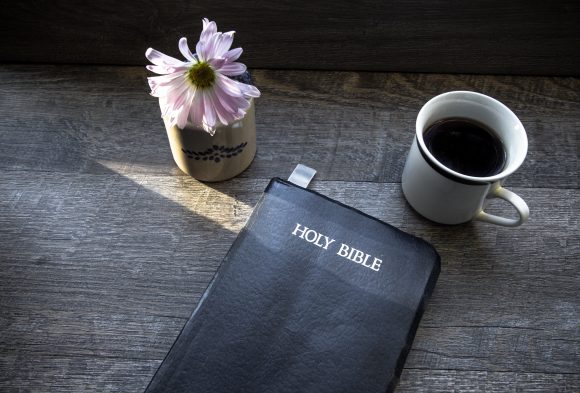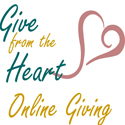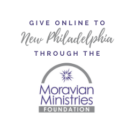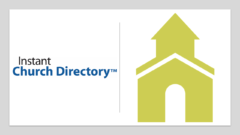Setting the Table
John 21:1-13, 15-17; 1 Corinthians 3:6-7, 9-11, 16; Psalm 119:41-48
Today’s texts from the larger lectionary of the church are wonderful background pieces to a text I’ve been considering for some time as I’ve felt called to follow a new bend in my vocational path. Some of you know that I love the parables, particularly as I’ve worked with them in the worship and storytelling approach known as Godly Play. But one of my other favorite genres is the meal story – as some commentators on this topic like to point out, “Jesus eats his way through the gospels.” A lot happens around food and tables in the New Testament – maybe we should take a cue from that about what can happen around the table that is critical to forming and sustaining relationships.
I invite you to hear this text from John 21. You are welcome to follow the text as it is printed in the bulletin, but I’m going to share it with you more like I would downstairs in Children’s Worship this morning.
Here we are by the Sea of Galilee, sometimes we call this place the Sea of Tiberias or Lake Gennesaret. It’s helpful to remember that, even though it is very large, it is still a lake surrounded all the way around by land. In places it’s sandy but in others it’s more rocky and there are hills and valleys all around it.
The sea is a strange and wonderful place. Sometimes the wind blows down through the valleys hard and strong, moving across the water quickly making it rough and wild. Sometimes the wind blows gentle and soft, calming the water and making it peaceful and still.
After God raised Jesus from the dead, Jesus’ disciples returned here to the Galilee, where Jesus had asked them to meet him. One evening seven of them decided to go fishing.
They fished all night, but caught nothing. Just after daybreak, they someone on the beach.
But they couldn’t tell who it was. He called out to them, “Have you caught any fish?”
“No,” they answered.
“Cast your net to the right side of the boat, and you will find some.” So they did.
Now there were so many fish they couldn’t pull in the net.
Someone said, “It’s Jesus!” Peter jumped out of the boat, into the water and ran to him.
The other followed behind in the boat, dragging the net.
When they came ashore, they saw a charcoal fire…
with fish and bread on it. “Come and eat,” Jesus said.
The disciples realized this was Jesus. Then Jesus took the bread and gave it to them… and also the fish.
When they had finished eating, Jesus said to Peter, “Peter do you love me more than these?”
“Yes,” Peter answered, “you know that I love you.”
Jesus said, “Feed my lambs.”
A second time Jesus asked, “Peter do you love me?”
Peter said, “Yes, you know I love you.”
Jesus said, “Tend my sheep.”
A third time Jesus asked, “Peter do you love me?”
Peter was very sad because Jesus asked him a third time, Peter replied, “You know everything; you know that I love you.” Jesus said to Peter, “Feed my sheep.”
Then Jesus said, “Peter, follow me.”
Jesus was a storyteller, even in this narrative about Jesus, we hear and see a storyteller at work there on the beach. He sets a table outside, he serves them what they went out in search of, he asks the friend most excited to see him a question about taking care of those who are also following. He asks 3 times, confirming that love 3 times – 1 each for the Peter’s refusal that he knows Jesus during Jesus’ trial.
He reminds them of his shepherd identity and acts of care, even now having just fed them – and asks to pass that mantle on.
As someone who knows the gifts of the Montessori method in education, someone who often works with young children, I get it. Jesus is all about the prepared environment, about setting up a space to make it ripe for discovery. Sometimes it is less about our words and more about rich symbol and metaphor that invite us to play with them.
Stole & Alb:
You all have given me such a hard time here over this robe thing… Let’s start there.
Funny how we expect things because of their familiarity.
Well if I’m going to put on a robe, then it needs one of these stoles with it.
As I’ve begun to prepare for the place where I am going, I’ve needed to get a few of these – only having the one you saw me wear at Christmas until a few months ago. So I’ve had to borrow from friends, this one being from a fellow pastor, as my own green one for ordinary time, the season of Epiphany and the time after Pentecost, just shipped yesterday. Why wear this? The stole is an historic symbol of ordination, a way to mark clergy as set apart. But as Moravians, we believe that all of you are priests, prophets and shepherds too… blessed by God to carry these tasks of community too. So let’s take this off for a moment.
And the Alb, well this is the style robe I decided on for myself, a choice many clergy opt for today, this is an historic symbol of baptism. Ever wonder why we encourage confirmands and infants to wear white, that’s an easy way to carry the symbol forward and personalize it. A simple undyed alb was a garment one put on to mark themselves as one presenting themselves for baptism, preparing to enter into this new life in Christ.
But even as we enter into this new life in Christ, we each have been blessed by God with unique gifts, different combinations for each of us, that we bring into our shared Christian life, right? I’ve come to you with my own life story that shapes and informs what I can offer, so has each of you. Let me lay this aside and as I do, think to your own stories that have shaped you.
Can you bring me my apron?
This is my grandmother’s apron, the grandmother who taught me who to roll out some of the thinnest ginger cookies that the Women’s Fellowship in Mayodan sold each year at their bazaar. Yes, we had homemade ones when I was small. This apron reminds me how important it is to learn beside someone else and all the other small unseen tasks that we are called on to do.
Now, I need that tablecloth and napkins.
This linen tablecloth too, was hers, I remember it on the present table at my birthdays and when we had my grandfather’s entire extended family at our farmhouse for Christmas night dinner for most of my childhood. So much that matters happens when we gather around a table, it is the place where family is formed. And here is the table where this family is formed.
Just as when I’ve led our early communion preparation classes, the good shepherd leads the sheep to gather around the table, and then one by one the sheep are replaced by the people coming from East, West, North and South, let’s place these napkins here.
I’m ready for that teapot and cup.
You’ve got to keep a little whimsy in life, right? This teapot is from my friend in Atlanta, Helenita. Along with Kelly Moore as my clergy representative, Helenita was my lay representative at my ordination. Helenita was also my maid of honor at my wedding. Helenita took me out wedding dress shopping one day in Atlanta and her family were Nicaraguan Moravians active in First Moravian of Georgia, where I was the student pastor. I’ll never forget walking into their home that afternoon, and Mary, Helenita’s mom flew off into the kitchen to make a tray of tea and biscuits because the pastor had come to visit. This teapot always reminds me of that moment of hospitality, how it matters what it feels like to be received like you are the most important thing in that moment. How might that radical welcome be a part of this table?
And the cup, well we can’t have everything be too perfectly matched… an antique cup given by an older friend from her grandmother’s things – with the Moravian blessing on it. We all come together a little mismatched and you know, part of our heritage as Moravians is that we haven’t run from wounded and broken places and people – it’s what led us to teach among the Cherokee, to work on sugarcane plantations in the islands, to found hospitals for lepers – and to engage in City with Dwellings through our Augsburg partners.
Can you bring me the bowl and pitcher?
When we were getting ready for Miles’ baptism, we knew that I was leaving Home Church and somehow it didn’t make sense to do it in a church where Miles wouldn’t grow up. We decided to invite 40-50 of our closest friends into our backyard, our house was too small, for a worship service instead. One of those friends from Home Church invited me to lunch a couple of weeks beforehand. An artist, she had chosen among her pottery collection several bowls and wanted me to choose the one for Miles’ baptismal font. This is the one I chose.
And at Christmas this year, during a family gift exchange, David wound up with this fish shaped pitcher and I love it! We come into the waters of baptism and we should emerge filled with mirth and joy, just as this bowl and pitcher brings me joy. And so often joy comes in the messy middle of life together.
Please bring the plate and cup.
This plate was a gift from Miles and David for Christmas a few years ago. You could look at this pattern as the tree of life, but it reminds me of the parable of the mustard seed. From the smallest of seeds, planted and tended, comes the largest of all vegetable plants; large enough even for the birds to make their homes among its branches. It is a perfect size to be used as a paten to hold the bread we share in communion. The bread which can nourish us, the bread of life.
And the cup, carved from stone, this one wasn’t a gift; it doesn’t come with a story of relationship that has formed me. Instead, it bears the permanence of the stone it is carved from. What a wonderful symbol of permanence we find in the juice or wine of communion; the cup of peace, the cup of sustenance.
(Put alb and stole back on)
I’ve built on the foundation we share in Christ, but the building materials are you all.
I’ve sown seeds and tilled the soil, trying to work alongside of as many of you as I could, that by working together we have created this garden. What if, just as many of you have pitched in with one thing or another as I’ve asked, you turn to each other and ask. Fill the need you know with someone well known or someone you wish to know more about. Ask for company in the task you find yourself doing. The way of Christ is not a way walked alone, it is a way walked in the company of others – with all the complexity, brokenness, and challenge that this presents to us.
A table has been set during my time with you, a table that can nourish if you continue to nurture, enrich and encourage it to be replenished, filled with the many gifts you each can bring to it to be shared.
Whatever you do, feed my sheep.
I may only be an apprentice shepherd, attempting as Peter did so long ago, to care for those Jesus asks us to nourish, but so are you.
We are all both shepherd and sheep, nourishers and the nourished.
We are all calling out, “Come, come to the table”, but also the one arriving at the table to be fed.
We are all both gardener and plant, nurturers and the nurtured, in God’s field. The relationships between us, the fruit.
And so I leave you with these words from Julian of Norwich, a 14th century Christian mystic:
Be a gardener.
Dig a ditch
toil and sweat,
and turn the earth upside down
and seek the deepness
and water the plants in time.
Continue this labor
and make sweet floods to run
and noble and abundant fruits
to spring.
Take this food and drink
and carry it to God
as your true worship.
-Julian of Norwich
The Rev. Christy Clore







